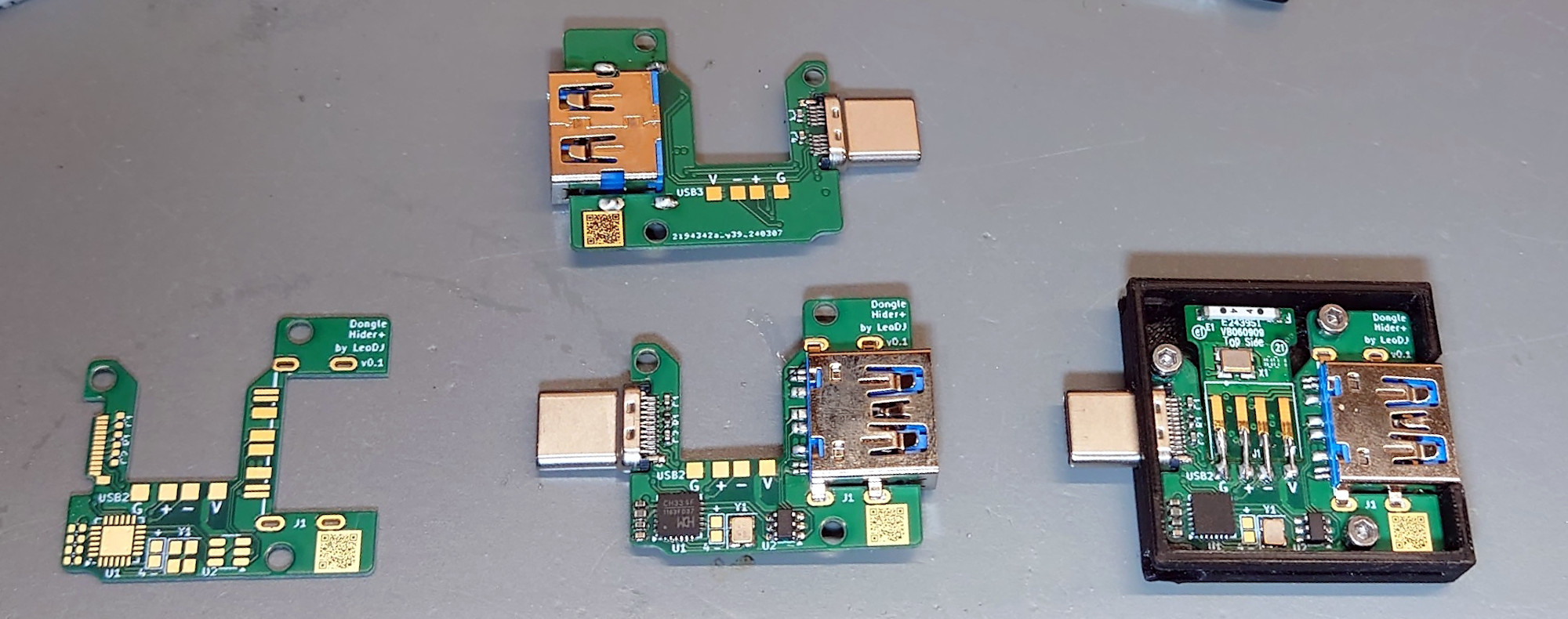OSHW Framework Laptop Expansion Hides Dongles [Hackaday]

If you’ve got a wireless keyboard or mouse, you’ve probably got a receiver dongle of some sort tucked away in one of your machine’s USB ports. While modern technology has allowed manufacturers to shrink them down to the point that they’re barely larger than the USB connector itself, they still stick out enough to occasionally get caught on things. Plus, let’s be honest, they’re kind of ugly.
For owners of the Framework laptop, there’s now a solution: the DongleHider+ by [LeoDJ]. This clever open source hardware project is designed to bring these little receivers, such as the Logitech Unifying Dongle, into one of the Framework’s Expansion bays. The custom PCB is designed with a large notch taken out to fit the dongle’s PCB, all you need to do is solder it in with four pieces of stiff wire.
That would be a neat enough project, but [LeoDJ] went one better by adding a CH334 USB hub chip and a female USB connector to the board. So not only does this module hide that unsightly dongle, it gives you back the USB port that it would otherwise be taking up. Since the CH334 still had extra ports available, [LeoDJ] put some additional USB pads on the back of the PCB — so assuming you can physically fit it in the 3D printed enclosure, you could tack on a second receiver dongle or some other tiny gadget.
As slick as the DongleHider+ is, it’s not a perfect solution. According to the project’s README, while USB 2.0 seems to work pretty well, plugging a USB 3.0 device into the port temporarily knocks out the internal dongle. It’s not a deal breaker, but something to keep in mind. It also looks like the DongleHider+ has only been tested under Windows so far, though we’d be surprised if there was actually anything that would keep it from working under Linux.
While there are plenty of reasons for hardware hackers to be excited about the Framework laptop, we think the Expansion Cards have to be near the top of the list. If you don’t have any dongles you want hidden, maybe you’d be interested in a microcontroller development board that you can slap into the side of your laptop?

![oshw-framework-laptop-expansion-hides-dongles-[hackaday]](https://i0.wp.com/upmytech.com/wp-content/uploads/2024/04/176432-oshw-framework-laptop-expansion-hides-dongles-hackaday.jpg?resize=800%2C445&ssl=1)
